#organicwaste
Text
The 5 R’s: Refuse, Reduce, Reuse, Repurpose, Recycle
Understanding and Implementing Key Principles for a Greener Future
Adopting sustainable practices is more important than ever in a world that is experiencing enormous environmental difficulties. The Refuse, Reduce, Reuse, Re-purpose, and Recycle (or “5 R’s”) provide a strong foundation for reducing waste and encouraging environmental stewardship. This blog delves deeply into each of these ideas, offering real-world applications and emphasizing how they work together to promote a sustainable future.
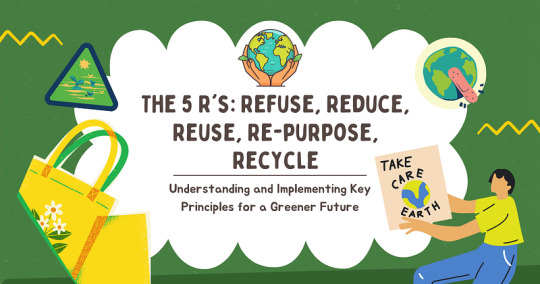
Refuse: The First Step towards Waste Reduction
Refusing entails making any conscious decisions to stay away from goods and resources that increase waste. We can drastically cut down on the amount of garbage we produce by purposefully refusing needless things.
Reduce: Minimizing Waste Production
Reducing involves conscious efforts to minimize the amount of waste we generate. This can be achieved through thoughtful purchasing decisions, resource conservation, and opting for durable products.
Reuse: Extending the Life of Products
Reusing is giving objects that may otherwise be thrown away a new use. We can cut waste and the requirement for additional resources by prolonging the life of things.
Re-purpose: Giving New Life to Old Items
Re-purposing, also known as up-cycling, is the process of creating new, useful things out of objects or resources that have been abandoned. This innovative method decreases the amount of waste that ends up in landfills while adding value to rubbish.
Recycle: Creating New Materials from Waste
Recycling is gathering, preparing, and repurposing waste resources to create new goods. This procedure minimizes environmental pollution while lowering the demand for raw materials.
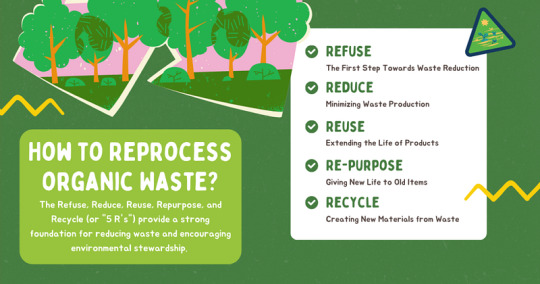
To read more about how the 5 R’s: Click Here!
Visit our Website: Klimrus.in
Mail us: [email protected]
Contact Us: +91 87880 62942
#refuse#reduce#reuse#repurpose#recycle#reprocess#organicwaste#segregating#composting#wetorganicwaste#trashmanagement#sustainability
0 notes
Text

Harnessing Organic Waste: Your Secret Weapon for a Thriving Green Garden
#OrganicWaste#Composting#GreenGardening#Sustainability#Biogas#OrganicFertilizer#EcoFriendlyGardening#WasteManagement#RenewableEnergy#SustainableLiving
1 note
·
View note
Text
The Wonders of Vermicomposting: A Comprehensive Guide
A Comprehensive Guide to Earthworm-Based Waste Management

Vermicomposting is a cutting-edge and environmentally responsible method of managing organic waste that recycles organic materials into nutrient-rich compost by using earthworms’ natural processes. Due to its effectiveness and sustainability, this practice has become more and more popular as a means of turning garden waste and leftover food into useful resources. We will examine the foundations of vermicomposting in this blog, with an emphasis on important ideas like earthworms, worm castings, vermicompost bins, red wiggler worms, and the recycling of organic waste.
Understanding Vermicomposting
Vermicomposting is one of the many methods of traditional composting that uses earthworms to speed up the breakdown of organic waste. By providing a favorable environment for these worms, organic waste is more efficiently broken down, resulting in high-quality compost.

Earthworms: The Unsung Heroes
Earthworms are central to the vermicomposting process. These remarkable creatures are natural decomposers, feeding on organic waste and transforming it into valuable compost.
Role of Earthworms in Composting
Earthworms consume organic waste and break it down through their digestive systems. As they feed, they excrete the waste in the form of worm castings, which are rich in nutrients and beneficial microorganisms. This process not only reduces the volume of waste but also enhances the quality of the compost produced.
Types of Earthworms Used
While numerous forms of earthworms can be used for composting, red wigglers (Eisenia fetida) are the most typically used. They are ideal for indoor and small-scale composting due to their high feeding and reproductive rates. Other species, such as European nightcrawlers (Eisenia hortensis) and African nightcrawlers (Eudrilus eugeniae), can also be employed, depending on the composting conditions and requirements.
Read More…
Visit our Website: Klimrus.in
Mail Us: [email protected]
Contact Us: +91 87880 62942
#vermicompost#vermicomposting#wastemanagement#earthworms#composting#wormscastings#vermicompostbin#redwigglerworms#organicwaste#organicwastemanagement
1 note
·
View note
Text

Reliable organic to resource waste segregation services for sustainable waste management. Get in touch with us for expert resource waste disposal solutions
0 notes
Link
#crosspost#I turned my Christmas tree into gardener’s gold…#Epic Gardening#youtube#zapier#ivys queue#2024-01-08T10:15:42Z#Composting#ChristmasTree#Sustainability#ZeroWaste#GreenLiving#OrganicWaste#EcoFriendly#NaturalResources#ReduceReuseRecycle#EnvironmentalImpact#Biodegradable#RenewableResources#WasteReduction#CircularEconomy#CarbonFootprint#soil health#Gardening#UrbanFarming#CommunityGarden#HomeComposting#ClimateAction#SustainableLiving#ResourceManagement
0 notes
Text
This is how Composting Works
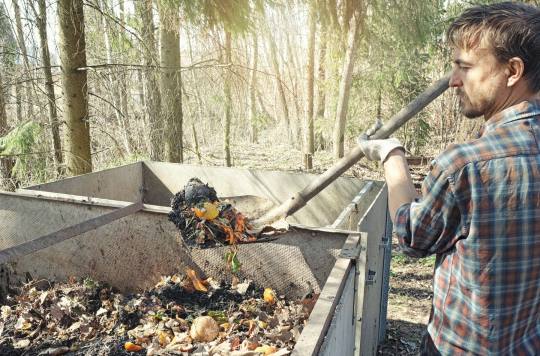
Composting is the process of breaking down organic waste into nutrient-rich soil. It's a simple and effective way to reduce waste, save money on fertilizer, and improve soil quality. In this article, we'll explore how composting works and how you can start composting at home.
The Basics of Composting
Composting involves creating an environment where organic matter can decompose naturally. The organic matter can include food scraps, yard waste, and other natural materials. The decomposition process is carried out by microorganisms, such as bacteria and fungi, which break down the organic matter into compost.
The Four Elements of Composting
There are four essential elements to successful composting:
- Carbon: This includes materials such as dried leaves, straw, and shredded paper. Carbon provides the energy source for the microorganisms that break down the organic matter.
- Nitrogen: This includes materials such as food scraps, grass clippings, and manure. Nitrogen provides the protein source that the microorganisms need to grow and reproduce.
- Water: Composting requires the right amount of moisture to keep the microorganisms active. Too little water will slow down the process, while too much water can cause the compost to become waterlogged.
- Oxygen: Microorganisms require oxygen to carry out the decomposition process. Proper aeration is necessary to prevent the compost from becoming anaerobic, which can create unpleasant odors and slow down the process.

The Composting Process
The composting process typically takes several months to a year, depending on the materials used and the conditions of the compost pile. The following are the general steps involved in the composting process:
- Gather organic matter: Collect food scraps, yard waste, and other organic materials in a compost bin or pile.
- Layer materials: Add a layer of carbon-rich materials, followed by a layer of nitrogen-rich materials. Repeat the layering process until the pile is several feet high.
- Water the pile: Sprinkle water on the pile to moisten it. The pile should be damp but not waterlogged.
- Turn the pile: Mix the materials in the pile with a pitchfork or compost turner to aerate it and distribute the moisture evenly.
- Monitor the temperature: As the microorganisms break down the organic matter, the temperature in the pile will rise. The ideal temperature range is between 120°F and 160°F. If the temperature gets too high, turn the pile to release the excess heat.
- Harvest the compost: Once the materials have broken down into a dark, crumbly, soil-like substance, the compost is ready to use. Harvest the compost from the bottom of the pile and use it to fertilize plants and improve soil quality.
Tips for Successful Composting
To ensure successful composting, keep these tips in mind:
- Start with the right materials: Use a mix of carbon-rich and nitrogen-rich materials to create the right balance for decomposition.
- Maintain the right moisture level: Check the moisture level of the compost pile regularly and adjust it as necessary.
- Turn the pile regularly: Aerating the compost pile will speed up the decomposition process and prevent unpleasant odors.
- Avoid adding certain materials: Do not add meat, dairy, or oily foods to the compost pile, as they can attract pests and slow down the composting process.
- Be patient: Composting takes time, but the end result is worth the effort. With patience and consistent effort, you can create nutrient-rich soil that will benefit your garden and the environment.
Composting is a natural and effective way to reduce waste, save money on fertilizer, and improve soil quality. By following these tips and understanding the basics of composting, you can start composting at home and enjoy the benefits of nutrient-rich soil.
Read the full article
#Carbonandnitrogenbalance#Composting#Compostingbin#Decomposition#Eco-friendly#Gardenfertilizer#Microorganisms#Organicwaste#Soilenrichment#Sustainablegardening#Vermicomposting
0 notes
Text
5 Benefits of using Organic Waste Composter Machine
Reduces Landfill Waste: Organic waste composters reduce the amount of waste that ends up in landfills. Landfills are known to emit greenhouse gases like methane, which contribute to climate change. Composting with an OWC machine rather than dumping it in a landfill also helps enrich the soil and reduces the need for chemical fertilisers, which can be harmful to the environment and human health. Additionally, composting can save space in landfills, which are often overburdened and difficult to manage.
Saves Money: Composting is a cost-effective and efficient way to manage municipal solid waste. Instead of paying for waste removal, businesses and households can use the compost produced as a soil amendment, lowering fertiliser costs.
Increases Soil Fertility: Compost produced from organic waste is an excellent source of nutrients for plants. It adds beneficial microorganisms and can improve the structure and water retention capacity of soil. Composting also helps to reduce greenhouse gas emissions that are generated from the transportation and disposal of waste in landfills, making it an environmentally friendly option. By using composting machines, we can contribute to a more sustainable future for our planet.
Reduces Carbon Footprint: Organic waste composters reduce the carbon footprint of businesses and households by minimising the amount of waste that is transported to landfills. This also reduces the carbon emissions associated with waste transportation. In addition, composting can also improve soil health and reduce the need for chemical fertilisers, making it a cost-effective solution for farmers and gardeners. By incorporating compost into the soil, it can help retain moisture and nutrients, leading to healthier plants and crops.
Reduces Water Usage: Compost-amended soil has better water retention capacity, reducing the amount of water required for irrigation. With the help of an OWCS machine, the amount of water that can be used in composting the solid waste or municipal waste in the open areas or landing can be reduced. This makes composting a sustainable solution for managing organic waste while also conserving water resources. Additionally, composting can improve soil quality and reduce the need for chemical fertilisers, further benefiting the environment.
Decreases the use of chemical fertilisers: Compost produced from organic waste is a natural source of nutrients for plants, reducing the need for chemical fertilisers. Chemical fertilisers can be environmentally hazardous and contribute to water pollution. By reducing the use of chemical fertilisers, composting also helps to preserve soil health and prevent soil erosion. This makes it a valuable practice for sustainable agriculture and land management.
Creates Green Jobs: The use of organic waste composters creates job opportunities in the composting industry, which can provide economic benefits to communities.
Reduces the Risk of Disease: Organic waste can attract rodents and other pests, which can carry disease. A composting machine can reduce the risk of pest infestations by properly managing organic waste.
Reduces Odors: Organic waste composters can help to control odours associated with waste. This can be especially beneficial for businesses or households located in urban areas. Composting also helps to reduce greenhouse gas emissions by diverting organic waste from landfills, where it would otherwise decompose and release methane. Additionally, compost can be used as a natural fertiliser, reducing the need for chemical fertilisers that can harm the environment.
Improves Public Health: Properly managing organic waste can reduce the risk of water and air pollution, which can improve public health. OWC machines can provide significant public health benefits by reducing the amount of organic waste that is sent to landfills, improving air and soil quality, and reducing the risk of disease transmission. Overall, composting is a sustainable solution that can benefit both the environment and public health.
0 notes
Photo





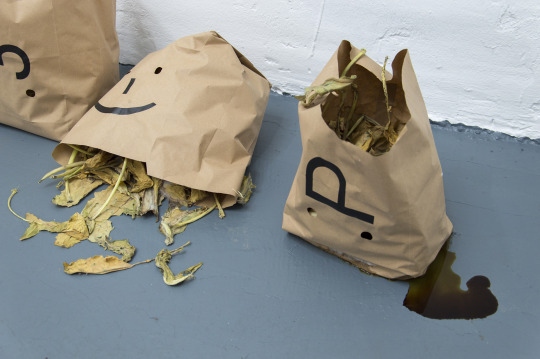
Dumbsters
:3 :’( :/ :P :O D: :? :-) :-[ :-s
2022; screenprints on perforated paper bags; vegetable waste; life size
In ‘Schöngeist Zeitgeist Poltergeist’, the two big wall pieces were accompanied by 10 different little guys, filled with fresh weeds of cauliflower and turnip cabbage. Every single paper bag had a well-known emoticon screenprinted on them. The usual colon (double-dot) eyes of the emoticon-faces was two holes punched into every bag, that turned them into a bag-mask that would perfectly fit over your head. Like the vegetables on the wall, the big amounts of cabbage weed in the compostal bags also went into strong decay during the 4 weeks of display and created an atmosphere of sour smell of rotting cabbage.
(*each bag was also released as an unlimited edition, folded and combined with dry pressed weeds, in black alu frame.)
#SchöngeistZeitgeistPoltergeist#TobiKeck#soloexhibition#soloshow#cabbagecore#KunsthalleOst#Leipzig#kunsthalle#emoticon#emoji#emoticons#vegetables#emotions#mementomori#stilllife#mask#paperbag#organicwaste#decompose#wastebag#face#head#smiley#Schöngeist#zeitgeist#poltergeist
1 note
·
View note
Photo

Tips For Reducing Food Waste And Why Is It Essential
The United Nations Environment Programme (UNEP) has created a Think. Eat. Save campaign to raise awareness about food waste and what we can do to reduce it. Here are some tips on how you can reduce your food waste:
1 note
·
View note
Text
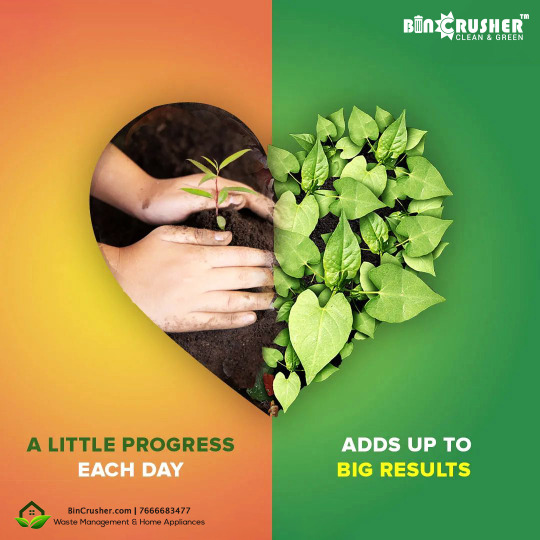
Compost today for a greener planet tomorrow!
Organic Compost Machine
.
.
.
#Bincrusher#CompostingMachine#Composter#FoodWaste#StartComposting#sustainability#StartCompost#OrganicWasteComposter#OrganicWaste#Ecofriendly
0 notes
Photo

Do you know that fungi can be used to produce innovative biomaterials that are superior to conventional plastics?
It was a pleasure for Arun Pandit ®, co-founder of Hyphen SCS, to speak with and learn about the innovations from Yotam David and Rotem Cahanovitc, founders of MadeRight, while serving as a representative of Hyphen SCS at MassChallenge Israel.
Currently, oil refineries are sustaining a dying fossil economy; soon, however, bio-refineries will do the same for a thriving bioeconomy.
MadeRight is here to usher in a new era of environmentally friendly materials that offer top-tier performance and biodegrade back into the environment once their function has been served.
They use fungi, nature's largest recycler, to create cutting-edge performance materials using a holistic approach.
They combine fungi and organic waste to produce novel biomaterials that are biodegradable.
Their first material will be a sustainable alternative to plastic, suitable for rigid packaging.
Visit hyphenscs.com to learn more!
#hyphenscs #arunpandit #sustainable #economy #packaging #oil #innovation #learning #founders #maderight #biodegradable #fungi #organic #organicwaste #plastic #biomaterials #recycler
#yotamdavid #rotemcahanovitc #masschallenge #masschallengeisrael #biomaterials #bioeconomy #environment
2 notes
·
View notes
Text
The Wonders of Vermicomposting: A Comprehensive Guide
A Comprehensive Guide to Earthworm-Based Waste Management
Vermicomposting is a cutting-edge and environmentally responsible method of managing organic waste that recycles organic materials into nutrient-rich compost by using earthworms’ natural processes. Due to its effectiveness and sustainability, this practice has become more and more popular as a means of turning garden waste and leftover food into useful resources. We will examine the foundations of vermicomposting in this blog, with an emphasis on important ideas like earthworms, worm castings, vermicomposting bins, red wiggler worms, and the recycling of organic waste.

Understanding Vermicomposting
Vermicomposting is one of the many methods of traditional composting that uses earthworms to speed up the breakdown of organic waste. By providing a favourable environment for these worms, organic waste is more efficiently broken down, resulting in high-quality compost.

Earthworms: The Unsung Heroes
Earthworms are central to the vermicomposting process. These remarkable creatures are natural decomposers, feeding on organic waste and transforming it into valuable compost.
Role of Earthworms in Composting
Earthworms consume organic waste and break it down through their digestive systems. As they feed, they excrete the waste in the form of worm castings, which are rich in nutrients and beneficial microorganisms. This process not only reduces the volume of waste but also enhances the quality of the compost produced.
Types of Earthworms Used
While numerous forms of earthworms can be used for composting, red wigglers (Eiseniafetida) are the most typically used. They are ideal for indoor and small-scale composting due to their high feeding and reproductive rates. Other species, such as European night crawlers (Eiseniahortensis) and African night crawlers (Eudriluseugeniae), can also be employed, depending on the composting conditions and requirements.
Read More…
Visit our Website: Klimrus.in
Mail Us: [email protected]
Contact Us: +91 87880 62942
#vermicompost#vermicomposting#wastemanagement#earthworms#composting#wormscastings#vermicompostbin#redwigglerworms#organicwaste#organicwastemanagement
0 notes
Text
"Fueling the Future: The Biogas Revolution" 🌿
In the quest for sustainable energy solutions, the Biogas Market emerges as a transformative force, harnessing the power of organic waste to produce clean and renewable energy. Biogas, a versatile fuel derived from the anaerobic digestion of organic materials such as agricultural residues, food waste, and wastewater, offers a promising pathway towards decarbonization and energy independence. As nations worldwide grapple with the dual challenges of climate change and waste management, biogas stands out as a beacon of hope, providing a renewable energy source while mitigating environmental pollution.
#Biogas #RenewableEnergy #Sustainability #WasteManagement #ClimateAction #CleanEnergy #FutureofEnergy #CircularEconomy #GreenTechnology #EnergyIndependence #ClimateSolutions #OrganicWaste #AnaerobicDigestion #EnvironmentalStewardship #GreenLiving
The Biogas Market is experiencing rapid growth and innovation, driven by advancements in biogas production technology, supportive government policies, and increasing public awareness of the benefits of renewable energy. Biogas can be utilized in a variety of applications, from generating electricity and heat to fueling vehicles and powering industrial processes. Additionally, the byproducts of biogas production, such as digestate and biofertilizers, can be used to enrich soil health and improve agricultural productivity, creating a closed-loop system that maximizes resource efficiency.
As the world transitions towards a low-carbon economy, the Biogas Market holds immense potential to drive positive change and accelerate the shift towards renewable energy sources. By utilizing organic waste streams to produce biogas, we can reduce greenhouse gas emissions, mitigate air and water pollution, and promote sustainable development. It's time to embrace the biogas revolution and harness the power of nature to fuel a cleaner, greener, and more resilient future for all.
0 notes
Photo

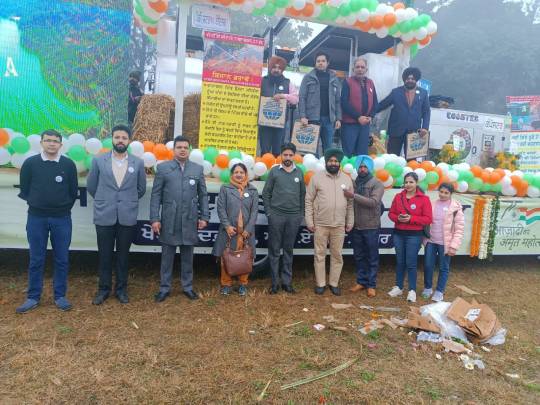
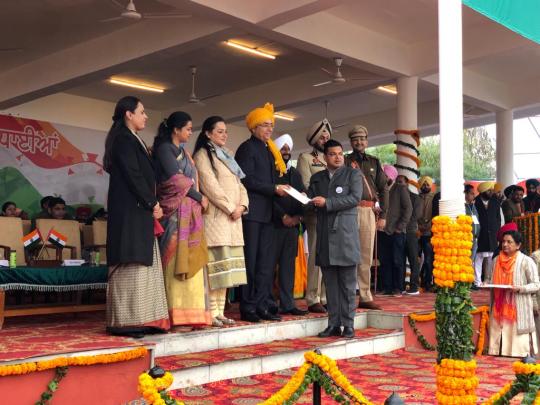
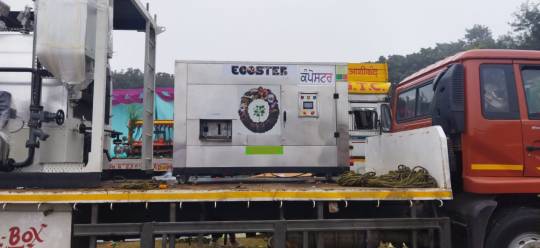
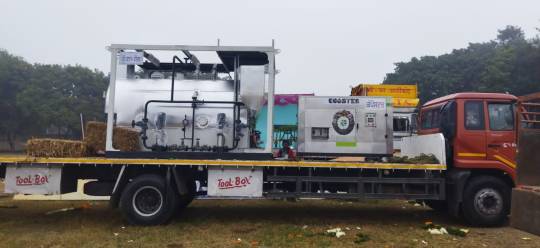
ECOSTER Awareness | PPCB Tableau | Republic Day 2023#gogreen #solidwastemanagement #municipalsolidwaste #organicwaste #management #ecoparyavaran #environmentmatters #republicday #celebrations
0 notes
Text
Tweeted
Participants needed for online survey! Topic: "Organic waste management in companies" https://t.co/2BgRpgdpWr via @SurveyCircle #OrganicWaste #companies #organic #LouvainSchoolOfManagement #master #survey #surveycircle https://t.co/KsgswJbPMn
— Daily Research @SurveyCircle (@daily_research) Nov 21, 2022
0 notes
Photo
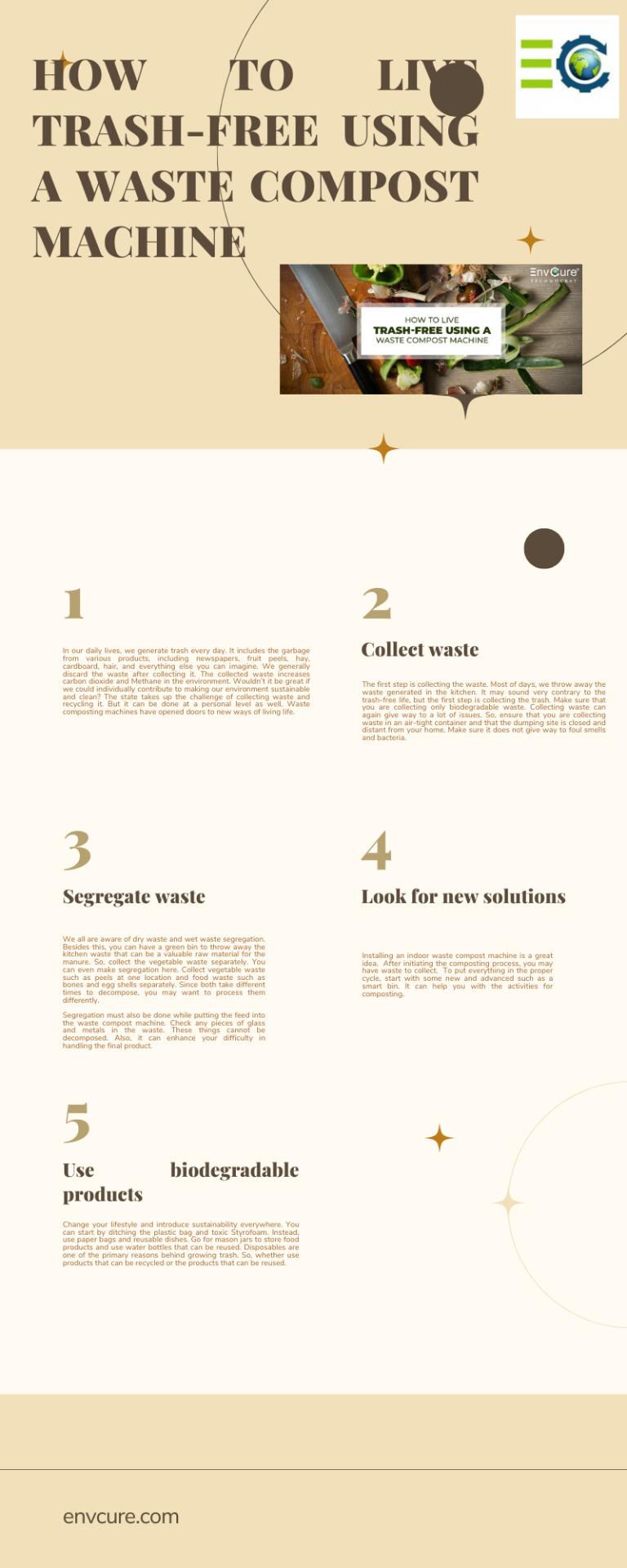
An organic waste compost machine is an excellent way of indoor composting. It is about choosing a clean and trash-free lifestyle every day. We have different types of quality automatic waste compost machines for commercial and residential purposes.
0 notes